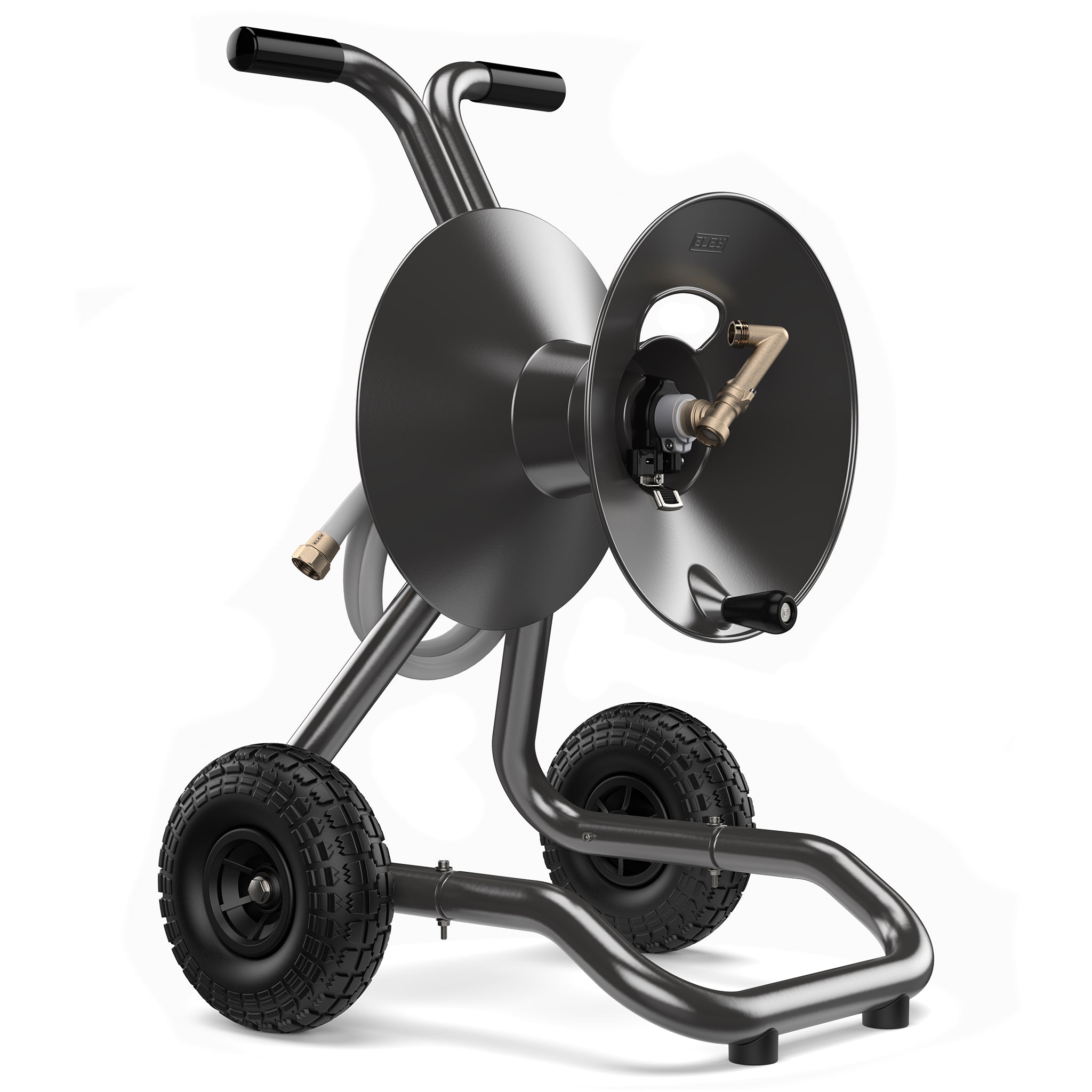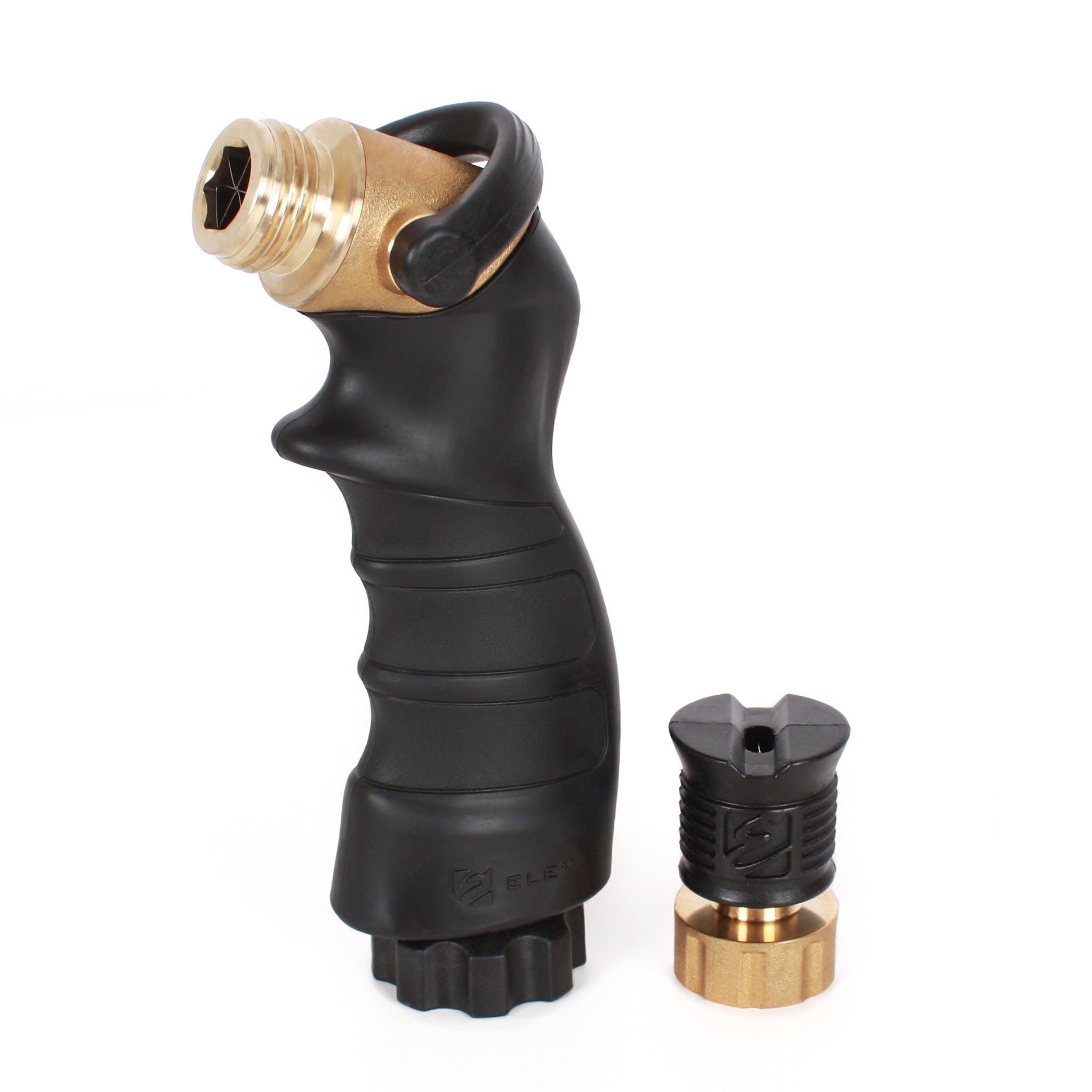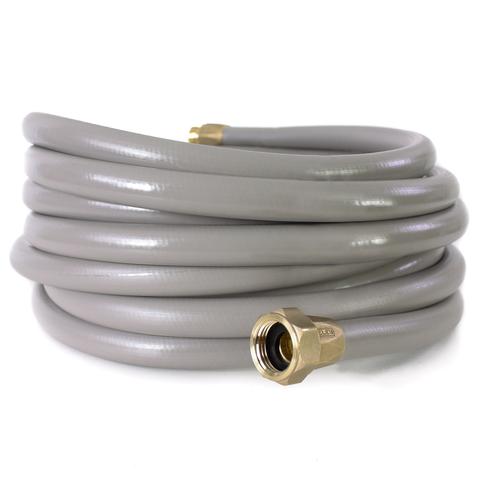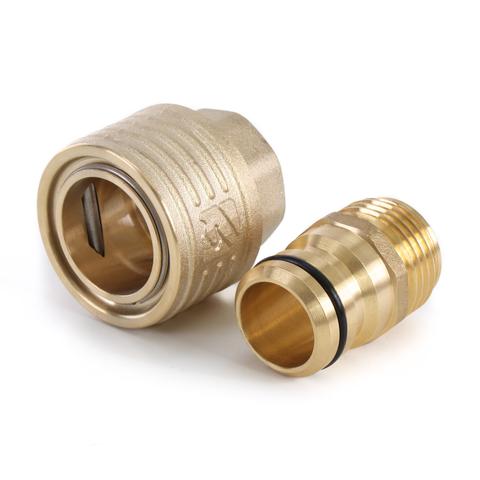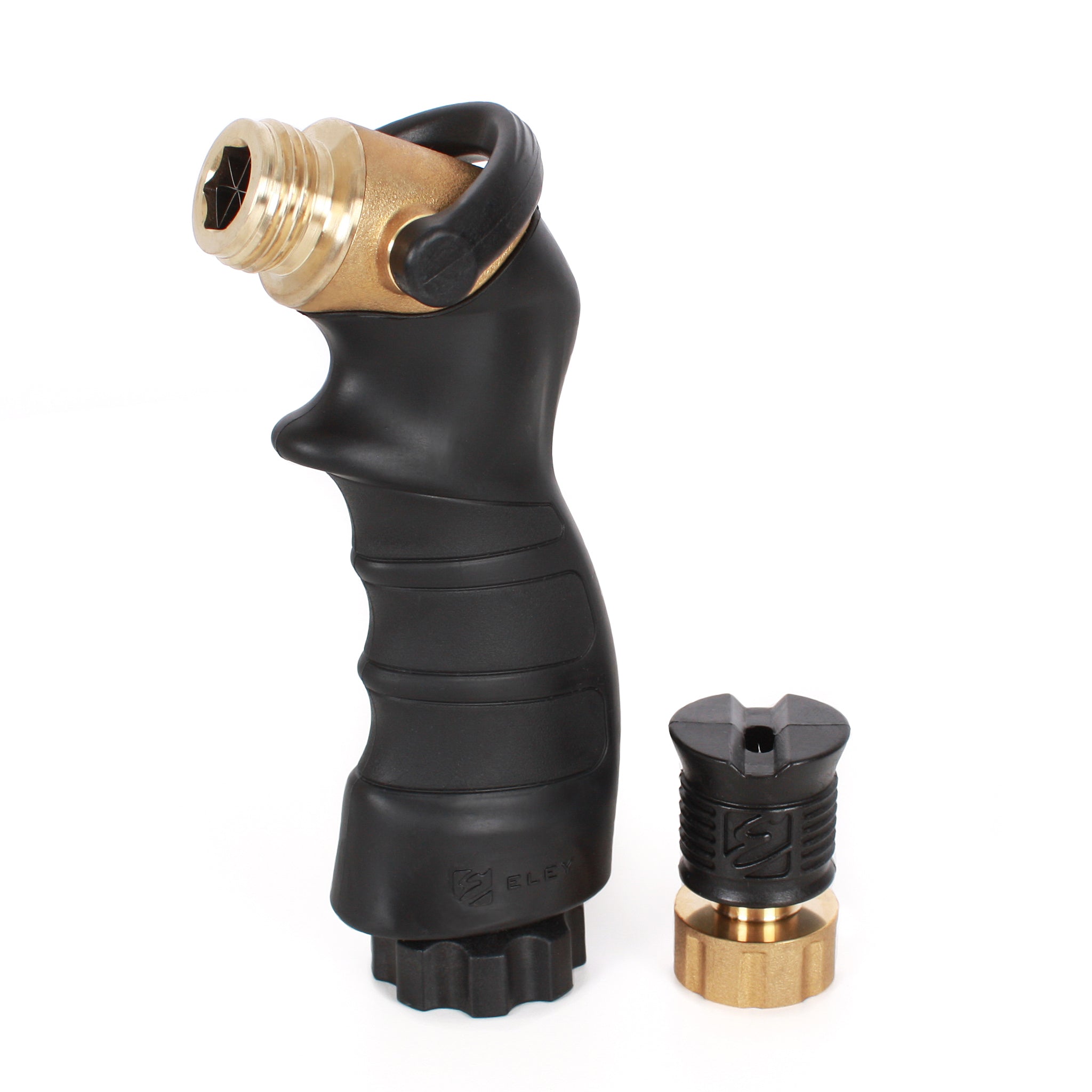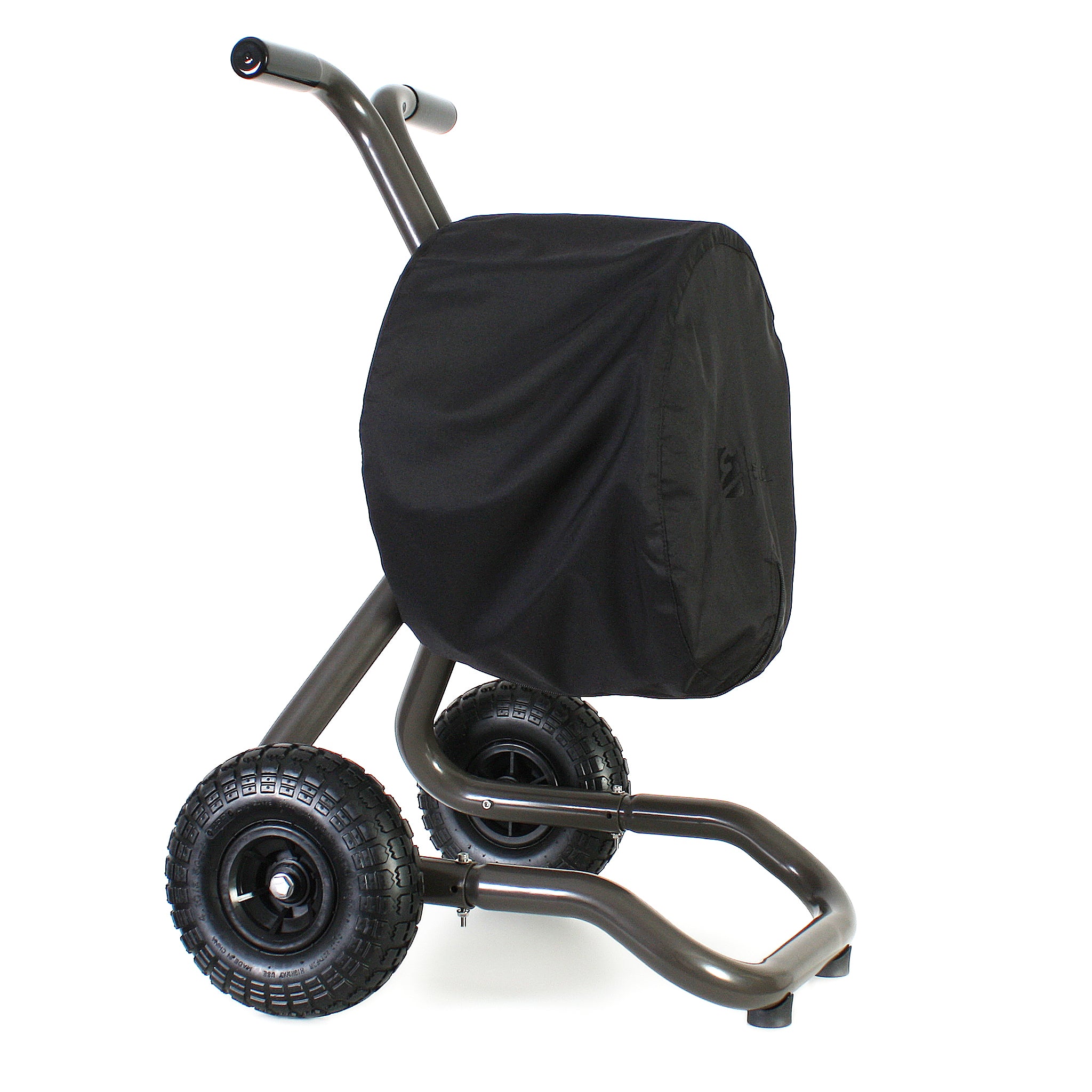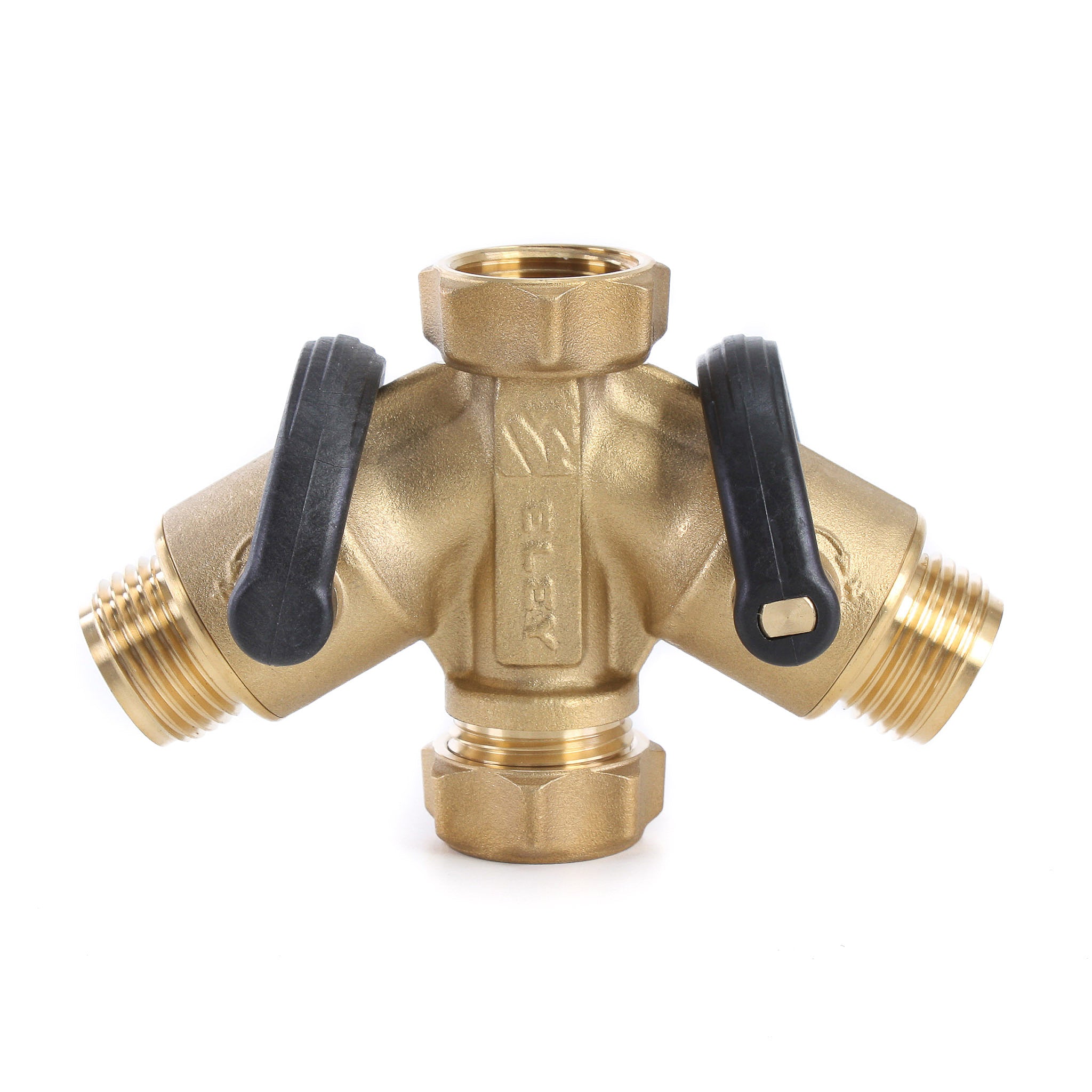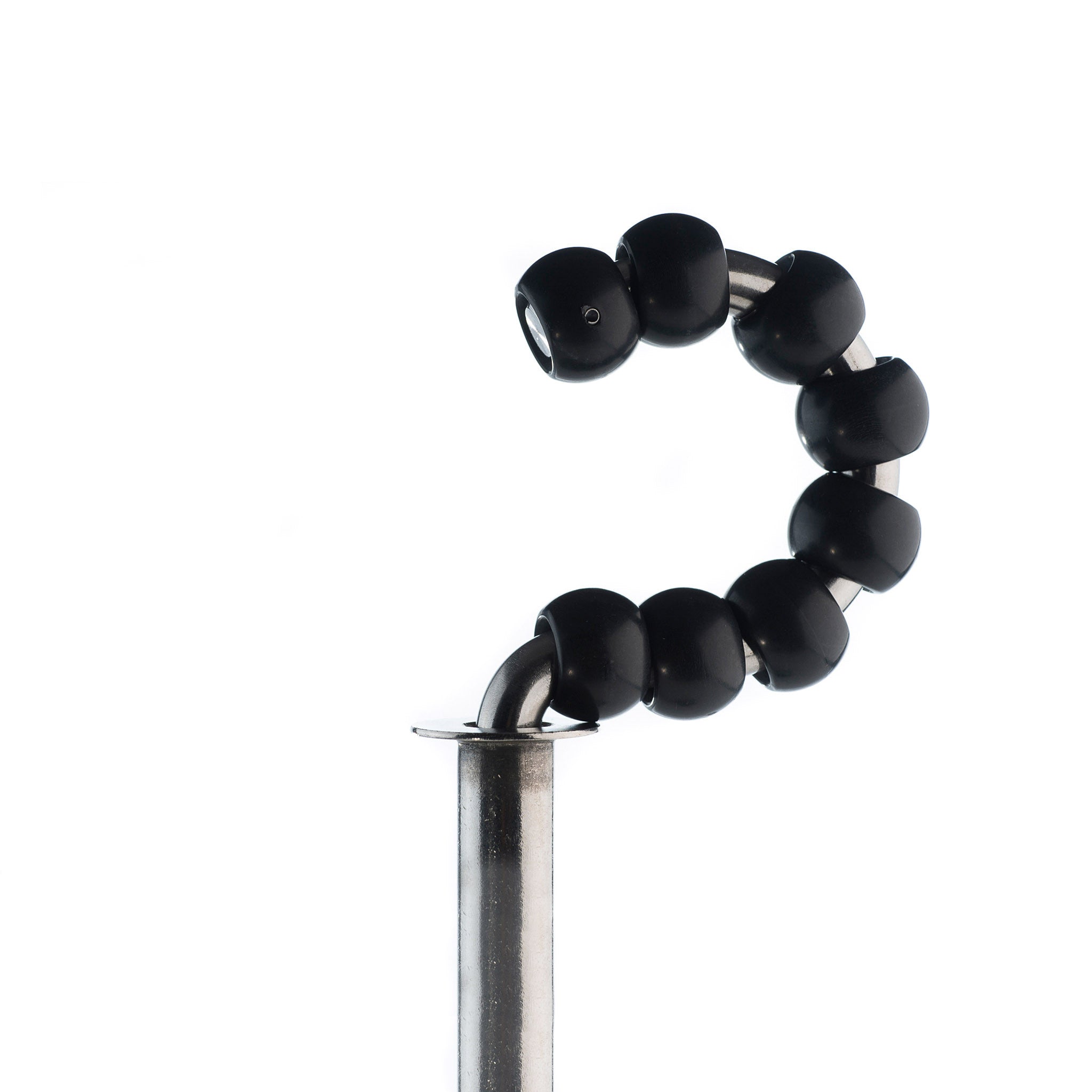The right hose for you depends on your needs and personal preferences. In a nutshell, here are the primary differences:
Weight - The rubber hose weighs twice as much as the polyurethane hose. This is most noticeable while pulling the hose out and reeling it back in.
Durability - The outer cover on the polyurethane hose is made of the same material as the wheels on in-line roller skates. It is the most durable covering we have ever found. This will be important if the hose is pulled across rough or sharp surfaces, such as rock, or if pulled around stone corners, etc. The outer cover on the rubber hose is softer and easier to tear.
Flexibility - The rubber hose is a softer and more flexible material than polyurethane. And because the rubber hose is more "pliable," it will be easier to coil into a circle on the ground and lay into a nice, uniform wrap when reeling it back onto a hose reel. Polyurethane hoses are less pliable and have more of a spring or bounce. This unique characteristic is an advantage regarding kink resistance (discussed below), but not so much when trying to coil it on the ground or create a uniform wrap on a hose reel. The polyurethane hose can roll up quickly and easily onto a hose reel; however, it is just not as easy to attain that picture-perfect-looking wrap on a hose reel as it is with the rubber hose. Also, longer lengths of polyurethane hose should only be used with a hose reel. Trying to loop a long length (75 feet or more) of polyurethane hose into a circular coil on the ground could be frustrating. Both hoses remain highly flexible, even in cold temps.
Kink-Resistance - When a loop is formed while using a rubber garden hose, because of the high pliability and flexible characteristics of the rubber material, the hose will almost always collapse down into a kink. Rubber material also will retain a high "kink memory", meaning that once kinked, the hose will have a tendency to kink over and over again in the same spot. The unique characteristics of the "springier" polyurethane hose is that when a loop is formed in the hose, it will have a tendency to 'flip' out of a loop rather than collapse down into a kink. Plus, the polyurethane material has zero kink memory.
Flow Rate & Fittings – The ELEY polyurethane hose comes equipped with lead-free, crush-proof brass fittings, while the brass fittings on most rubber hoses are not lead-free. Lead-free means the ELEY polyurethane hoses are drinking-water-safe. ELEY fittings also provide a true 5/8-inch opening for full-flow. While the ID of rubber hoses may be 5/8-inch, the external crimp fittings typically have openings much smaller and therefore reduce the flowrate.
Size/Storage Capacity - Although both hoses provide the same 5/8" ID of water flow, the cover on the rubber hose is much thicker, which is one contributing reason for the additional weight. The thicker covering also means you can't store as much of the rubber hose on the hose reel. The maximum capacity of our standard reels with the 5/8" polyurethane hose is 125 feet. The maximum capacity with 5/8" of rubber hose is only 100 feet. With the Extra-Capacity Kit, these capacities are 200 feet and 150 feet respectively.
Pressure Rating - Both the polyurethane hose and most rubber hose are rated at 150 PSI.
Temperature Rating - The polyurethane hose is rated at -40°F to 165°F. The rubber hose is rated at -40°F to 190°F.
Latex Allergies - Suffer from a latex allergy? Polyurethane garden hose is 100% latex-free. Rubber garden hose is not.
Non-Marking - The polyurethane cover is 100% non-marking, meaning you don’t have to worry about it leaving marks across surfaces like boat and pool decking. The cover of rubber hoses is softer and notorious for leaving marks when drug across surfaces.
Warranty - The longest warranty we were able to find on a rubber garden hose was 2 years. ELEY backs their polyurethane garden hose with a 10-year, no-leak, no-fail warranty & guarantee.
Drinking Water Safe - Polyurethane garden hoses are 100% drinking water safe. Rubber hoses are not.
In summary, polyurethane hose outperforms rubber hose in every category except when it comes to pliability and the ease of coiling it into a circle on the ground or forming a uniform wrap on a hose reel. As the photos below demonstrate, the polyurethane hose can do both, just not as quickly or as easily as the rubber hose.



